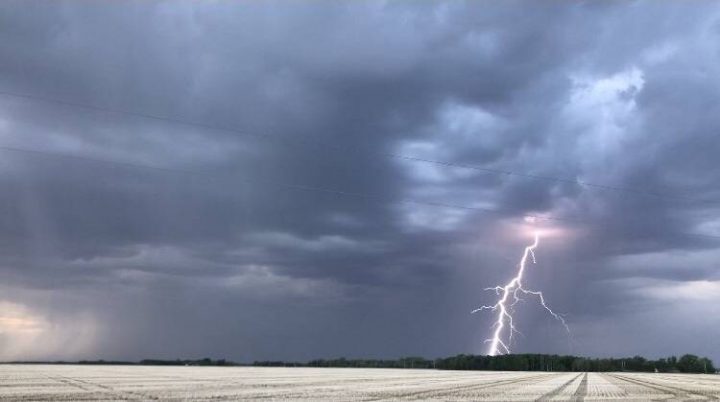From thunderstorms to twisters, severe weather happens during summer in Manitoba. With weather forecasters expecting hot conditions through the week, the risk of tornadoes is real.

An EF4 tornado hit the western Manitoba community of Alonsa Aug. 3, killing one man and injuring two others.
Environment Canada first rated the storm as an EF3, but upgraded it after receiving damage pictures and reports. The weather service encourages reports from the public using #MBStorm. Submissions can also be made here at mbstorm@canada.ca.
Would you know what to do if severe weather, a lightning storm or a tornado, happens in your area?
Be prepared
Emergency experts say the best way to weather a storm is to be ready even before it hits. Always check the weather forecast before you go out driving, boating or camping.
You should always have a number of items on hand for use in case of a severe weather event:
- an emergency kit (see below for a complete list of items to include in your kit)
- a heating source/fuel
- water and ready-to-eat food
- battery-powered or wind-up flashlights and radios, and extra batteries
- your emergency plan complete with contact information
WATCH: Touring the aftermath of the devastating tornado near Alonsa, Manitoba

During a storm
According to the Canadian Department of Public Safety, what you do during a storm will depend on the conditions.
In heavy rain, check to make sure you have adequate drainage around where you are, to prevent flooding.
If a thunderstorm is approaching, unplug radios and TVs and listen for weather updates on a battery-powered radio. Make sure loose objects outdoors, such as furniture or garbage cans, are secured so they don’t become flying hazards. Stay inside where it is safe.
In lightning, get inside a house, building or solid structure – not a tent or awning. Stay away from trees or water. A car is better than being outside, but being indoors is better still. If your only option is outdoors, stay low.
If the situation is a tornado, the rule of thumb is to get as close to the ground as possible, to protect your head and watch for flying debris.
In the case of a tornado, what you do depends on where you are.
- Life in the forest: How Stanley Park’s longest resident survived a changing landscape
- ‘Love at first sight’: Snow leopard at Toronto Zoo pregnant for 1st time
- Carbon rebate labelling in bank deposits fuelling confusion, minister says
- Buzz kill? Gen Z less interested in coffee than older Canadians, survey shows
In a house
- keep away from windows, doors and fireplaces
- If you are advised by officials to evacuate, go, and take your emergency kit with you
- Do not use your land-line telephone – it is not safe. Use a cellular telephone instead, if you have service
- Go to the basement or take shelter in a small interior ground floor room such as a bathroom, closet or hallway
- If you don’t have a basement or closet, protect yourself by taking shelter under a heavy table or desk
In a car
- Stop the car away from trees or power lines that might fall on you. Stay there.
- If you spot a tornado in the distance go to the nearest solid shelter.
- If the tornado is close, get out of your car and take cover in a low-lying area, such as a ditch.
Camping or boating
- Do not go out in a boat during a storm. If you are on the water when bad weather approaches, head for shore immediately. Always check the marine forecast before leaving for a day of boating and listen to weather reports while you are out on the water.
- More than half of all deaths from tornadoes happen in mobile homes – find shelter elsewhere, preferably in a building with a strong foundation.
- If no shelter is available, lie down in a ditch, away from your car or mobile home. Beware of flooding from downpours and be prepared to move.
RELATED: Surviving the most powerful tornado in Canadian history
The federal government website suggests you have an emergency kit containing:
- Water — two litres of water per person per day (include small bottles)
- Food that won’t spoil, such as canned food, energy bars and dried foods (replace once a year)
- Manual can opener
- Wind-up or battery-powered flashlight (and extra batteries)
- Wind-up or battery-powered radio (and extra batteries)
- First aid kit
- Extra keys for your car and house
- Cash, inlcuding change
- Important family documents such as identification, insurance and bank records
- Emergency plan — include a copy in your kit as well as contact information.
Find more information on what to do when severe weather hits, on the Government of Canada website here.








Comments